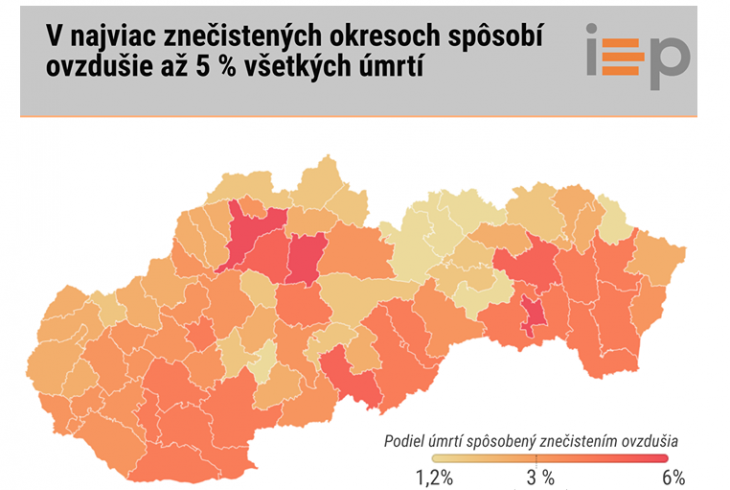

New
There's something in the air
24. 02. 2021
![]() Air
Air
High concentrations of air pollutants have a significant impact on public health in Slovakia. Long-term exposure to dust particles increases the incidence of asthma, cardiovascular problems, lung diseases and consequently leads to premature death. However, despite improvements, the situation is still not good.

With the support of the European Commission, the Institute of Environmental Policy, in cooperation with the World Bank, prepared a study estimating the regional health effects of air pollution in Slovakia. It also compared the benefits and costs of the National Air Pollution Control Program (NAPCP) in the field of public health. The study covered all 72 districts (Bratislava and Košice were counted as one district) and was funded under the European Commission's Structural Reform Support Program.
The current high concentrations of PM2,5, PM10 and NO2 are the cause of about 1,592 premature deaths per year in Slovakia. This means that if concentrations were reduced to the value recommended by the World Health Organization (10 μg / m3 for PM2.5 and 20 μg / m3 for PM10), there would be approximately 1,600 fewer premature deaths per year in Slovakia. The main cause is exposure to PM2.5 particles. If we consider a zero level of pollution as a reference level (as used, for example, in the EEA Air Quality in Europe reports), the overall estimate will rise to 4,375 premature deaths. However, such a reference value is rather theoretical, as concentrations never fall to zero, especially for natural dust. The estimate is based on epidemiological studies showing a direct effect of elevated concentrations of pollutants on health.
In addition to premature deaths, air pollution also causes higher morbidity, which leads to reduced activity and lost days of work, but also to a higher incidence of chronic bronchitis and asthma. More than 5 % of all deaths can be attributed to air pollution in the most affected areas of Žilina, Košice and Ružomberok. Improving air quality in these areas will therefore have the greatest impact on improving public health. Košice also recorded one of the highest incidences of asthma and chronic bronchitis in Slovakia.
Although the effects of the pandemic were not modeled in the study, other research has shown that dust particles can help transmit COVID-19. In addition, the effects of air pollution and the higher incidence of chronic diseases place people in affected groups at higher risk with COVID-19.
A summary of the study can be found in the commentary In English: Something is in the air











